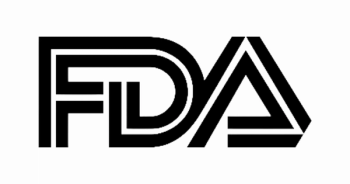
Peers & Perspectives in Oncology
- June I 2025
- Volume 3
Tarhini Breaks Down RELATIVITY-047 Survival Benefits and PFS2
During a live event, Ahmad Tarhini, MD, PhD, discussed the RELATIVITY-047 trial of nivolumab/relatlimab vs nivolumab alone in advanced melanoma.
Targeted OncologyTM: What was the data behind the approval of nivolumab (Opdivo)/relatlimab (Opdualag) in patients with melanoma?
Ahmad Tarhini, MD, PhD: RELATIVITY-047 [NCT03470922] was the phase 3 study that tested a fixed-dose combination of nivolumab and relatlimab. It was given as a single infusion given every 4 weeks compared with nivolumab, also 1 infusion every 4 weeks. The primary end point was progression-free survival [PFS] by blinded independent central review [BICR], and this presentation was at the median follow-up of 34 months and minimum follow-up of 33 months.1
For the baseline patient characteristics, the question is, how do these characteristics compare with other randomized, controlled trials, including CheckMate 067 [NCT01844505]? Looking at the M1C and M1D disease, about 41% of patients went on the study had either M1C or treated brain metastases, M1D disease, comparable with CheckMate 067.1,2 Looking at serum lactate dehydrogenase [LDH], 36% of patients had more than the upper limit of normal. Also looking back at CheckMate 067, it is comparable. Then 59% of patients had PD-L1 expression less than 1%, comparable with other phase 3 studies. For BRAF mutation status, 61% of those patients were BRAF wild type.
What was the efficacy seen in the RELATIVITY-047 trial?
The primary end point was PFS by BICR. The median numbers were 10.2 months vs 4.6 months [for the combination vs monotherapy, respectively]….1 The PFS HR was 0.79 [95% CI, 0.66-0.95]. At 4 years, 30% of patients were progression free and alive with the combination, compared with 22% with nivolumab as monotherapy.
The exploratory analysis of overall survival [OS] was a secondary end point. We saw a clinically meaningful improvement in OS, with a median of 51.0 months and 34.1 months, respectively, and the HR was 0.80 [95% CI, 0.66-0.99]. Looking at cross-trial comparison with CheckMate 067, [OS HR] was 0.84, so it was essentially comparable.2 At 4 years and 5 years, 52% and 49% were alive, compared with 43% and 39% with nivolumab as monotherapy.1
The confirmed objective response rates were 44% and 34%, so about 10 percentage points difference between nivolumab/relatlimab and nivolumab. The complete response rates were comparable at 20% and 19%.
What did the other analyses show for these patients with melanoma?
There was an exploratory analysis looking at central nervous system [CNS] metastases pre-survival, looking at the 2 arms and comparing them. We do not have data with nivolumab/relatlimab with brain metastases. The analysis showed that at 4 years, 83% were CNS metastasis free with the combination, compared with 73% with nivolumab alone; the HR was 0.63 [95% CI, 0.33-1.21].
How did patients receiving nivolumab/relatlimab or nivolumab alone do in the second line?
The main question is, what happened to those patients who started with nivolumab/relatlimab or nivolumab on this study, and what were the salvage patterns and the likelihood of response on salvage, especially with nivolumab plus ipilimumab [Yervoy]? So we started with nivolumab/relatlimab; what was the likelihood of response with nivolumab/ipilimumab in the second line? This analysis looked at patients who were salvaged with nivolumab/ipilimumab, monotherapies, anti–PD-1, or BRAF/MEK inhibitors.
First, they looked at PFS2, meaning the second PFS following initial progression and then receiving the salvage therapy. What was an interesting observation here was a difference in favor of nivolumab/relatlimab compared with nivolumab in terms of PFS2. The HR was 0.79 [95% CI, 0.65-0.96]. The numbers were, at 4 years, 44% and 35%, respectively.
The response rates are in small numbers. Looking at nivolumab/ipilimumab, which would be of most interest probably for us in the second-line setting, It was only 17 patients in the nivolumab/relatlimab arm and 16 patients on the nivolumab monotherapy arm [receiving nivolumab/ipilimumab]. But the estimated response rates here were about 24% to 25% or so, suggesting that it's reassuring that there is a good likelihood of hopefully achieving a response in the second line for somebody who starts with nivolumab/relatlimab.
[In terms of] the 24-month PFS rates comparing those who received nivolumab/ipilimumab after nivolumab/relatlimab vs those who received nivolumab/ipilimumab after nivolumab, there appears to be a difference, at 50% and 19%. Obviously, these are with very small numbers, but it's an interesting observation. It could be reassuring about the likelihood of salvage with nivolumab/ipilimumab in this setting.
What were the rates of toxicities in each arm?
[The rate of] grade 3/4 [toxicity] with nivolumab/relatlimab was 22% and [the rate of] any-grade toxicities leading to discontinuation was 18%, 10% being grade 3/4. The likelihood of death was 1% of both arms, 4 patients in the nivolumab/relatlimab arm and 2 patients on the nivolumab monotherapy arm. There were cases of myocarditis as well, and troponin was monitored on these studies for the first 2 months of the treatment.
I think keeping an eye on the endocrinopathy is important, especially in the neoadjuvant setting and patients going for surgery, making sure that we do extensive testing, including endocrine tests, just to ensure. I had to delay surgery...in somebody who had thyroiditis that we found on blood work. I involved the endocrinologist, and we delayed surgery by 4 weeks, which is OK, especially in the responding patients. But just make sure that this does not interfere with the surgery.
DISCLOSURES: Tarhini previously reported a consulting or advisory role forBristol Myers Squibb, Merck, Genentech/Roche, Novartis, Sanofi/Regeneron, Partner Therapeutics, Clinigen Group, Eisai, Bayer, Instil Bio, ConcertAI, BioNTech, AstraZeneca, and Nested.






































